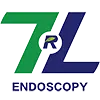What Is Capsule Endoscopy?
Capsule endoscopy is an advanced, noninvasive diagnostic procedure designed to examine the inside of your digestive system with exceptional precision. Instead of using traditional endoscopes, you simply swallow a small capsule equipped with a tiny camera, transmitter, and light source. As this capsule travels naturally through your gastrointestinal tract — from your stomach and small intestine to your colon and rectum — it captures thousands of high-resolution images. These images are wirelessly transmitted to a recorder attached to your body.
Once the examination is complete, your healthcare provider downloads the collected data and compiles the images into a detailed video sequence. This enables accurate assessment of the digestive tract and helps identify various gastrointestinal conditions.
Types of Capsule Endoscopy Devices
Modern capsule endoscopy systems come in several designs, each optimized for different medical purposes. They may vary in:
-
Number of cameras (single or dual)
-
Image resolution and frame rate
-
Battery life and recording duration
-
Data transmission technology
Some capsules store data internally and must be retrieved after they exit the body, while others transmit data in real time to an external recorder — the latter being the most commonly used due to convenience and accuracy.
Conditions Diagnosed by Capsule Endoscopy
Capsule endoscopy helps specialists detect and monitor various gastrointestinal disorders, including:
-
Crohn’s disease and other inflammatory bowel diseases (IBD)
-
Gastrointestinal bleeding from unknown sources
-
Celiac disease and ulcerative colitis
-
Colon polyps and colorectal cancer
Your doctor may also recommend capsule endoscopy to investigate unexplained weight loss, chronic anemia, or abdominal pain. It is especially valuable for patients who cannot tolerate sedation or undergo conventional colonoscopy.
Preparing for the Procedure
To ensure accurate imaging results, patients must follow specific preparation steps provided by their physician. Usually, this includes:
-
Avoiding smoking for at least 24 hours before the test.
-
Consuming only clear liquids the day before (such as water, apple juice, or clear sports drinks).
-
Taking a prescribed laxative to clean the intestines for optimal visualization.
-
Fasting after 10 p.m. on the night before the procedure.
-
Wearing comfortable clothing on the day of the test.
-
Informing your doctor about any medications you’re taking. Some drugs may need to be temporarily paused or adjusted.
Your doctor may also ask you to shave a small area on your abdomen or chest so that the sensors can be securely attached.
What Happens During Capsule Endoscopy
Upon arrival, the nurse or technician will attach either:
-
A sensor belt (worn around the waist), or
-
Electrodes placed on the abdomen and chest.
These sensors are connected to a recorder, which captures data from the capsule as it moves through your body. After setting up the equipment, you’ll be asked to swallow the activated capsule with water. The capsule, about the size of a large vitamin pill, passes naturally through your digestive tract while recording thousands of images.
After Swallowing the Capsule
Once the capsule is ingested, you can resume most of your normal daily activities. However, you should:
-
Avoid strenuous movement or exercise.
-
Stay away from MRI machines and strong electromagnetic fields.
-
Periodically check that your recorder is functioning properly.
You can start drinking water after about 4 hours, have light liquids after 6 hours, and enjoy a light meal after 8 hours. The capsule is disposable and will exit naturally within one to two days — you do not need to retrieve it.
After the Test
Once you return the recorder and sensors, your physician will download and analyze the captured images. You will typically receive your results within one to two weeks. Capsule endoscopy provides extremely detailed visualization, but some limitations exist — for example, the camera cannot stop or zoom in, and folds or debris may obscure certain areas.
If any abnormalities are detected, your doctor may recommend additional diagnostic procedures such as a biopsy or colonoscopy for confirmation.
Risks and Safety Considerations
Capsule endoscopy is considered very safe and minimally invasive. The most significant risk is capsule retention — when the capsule becomes trapped in a narrowed segment of the intestine. This is uncommon but may occur in patients with Crohn’s disease or intestinal strictures.
In such cases, the capsule can usually be retrieved safely through medication or double-balloon enteroscopy. Patients should also avoid exposure to strong magnetic fields while the capsule remains inside the body, as it can interfere with data transmission.
Capsule endoscopy is generally not recommended for individuals who are pregnant, have bowel obstructions, severe swallowing difficulties, or have undergone extensive gastrointestinal surgery.
Why Capsule Endoscopy Matters
Capsule endoscopy represents a revolutionary step in gastroenterology, providing a painless and effective alternative to traditional invasive methods. It allows early diagnosis of serious conditions, ensures patient comfort, and helps doctors make more accurate treatment decisions — all without anesthesia or hospital stay.
At Behbood Parsian, we strive to deliver advanced medical technologies that improve diagnostic precision and enhance patient care quality.


